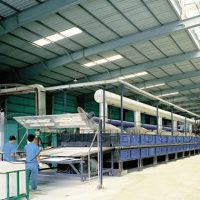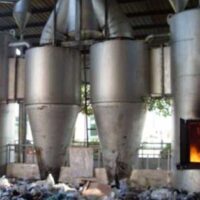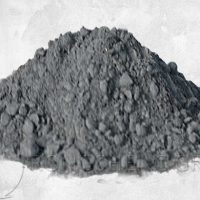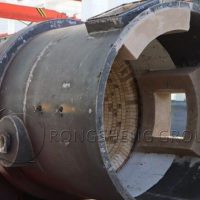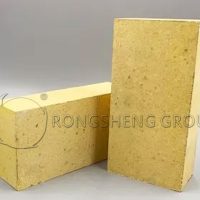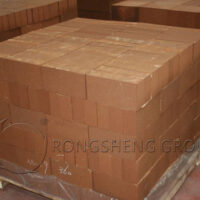Rongsheng Refractory Manufacturer is a refractory manufacturer with rich experience in the production and sales of refractory materials for high-temperature furnace lining. Rongsheng Refractory is committed to providing better refractory materials products for high-temperature industrial furnaces. Whether it is dense refractory bricks and dense refractory castables for working lining, or thermal insulation refractories and thermal insulation materials for insulation layers. We not only provide related furnace lining refractory materials products but also provide the design and construction of rotary kiln refractory lining materials. Our new insulation material, Ultra-High-Strength Nano Thermal Insulation Module, has low thermal conductivity and high strength. It can effectively insulate the rotary kiln and save production energy.

Ultra-High-Strength Nano Thermal Insulation Module Features and Applications
Ultra-High-Strength Nano Thermal Insulation Module takes into account the compressive strength of dense refractory bricks with a volume density above 2.3 g/cm3 and at the same time the thermal conductivity of lightweight bricks with a volume density of 0.8 g/cm3. It is the best choice for thermal insulation materials in dynamic kilns such as cement rotary kilns, hazardous waste rotary kilns, alumina calcining rotary kilns, and pelletizing rotary kilns, which have high requirements on the compressive strength of materials.
Ultra-High-Strength Nano Thermal Insulation Module Index Advantages
| Products | Ultra-high Strength Nano Thermal Insulation Module RSNJ-1 | Ultra-high Strength Nano Thermal Insulation Module RSNJ-2 | LZ-65 High Alumina Brick | 0.8 Mullite Insulating Brick | |
| RUL, 0.2MPa×0.6% | ≥1580 | ≥1400 | ≥1500 | 0.05MPa×0.5%
≥1200 |
|
| BD, g/cm³ | ≤1.7 | ≤1.7 | ≥2.5 | ≤0.8 | |
| CCS, MPa | ≥50 | ≥50 | ≥50 | ≥1.5 | |
| PLC, % | 1500℃×12h
-0.1~0.1 |
1400℃×12h
-0.2~0.2 |
1450℃×12h
-0.4~0.1 |
1350℃×12h
-1.5~0.5 |
|
| TC, W/(m·K) | Hot Side 800℃ | 0.399 | 0.600 | 1.5 | 0.35 |
| Hot Side 1100℃ | 0.411 | 0.650 | 1.6 | 0.40 | |
Ultra-High-Strength Nano Thermal Insulation Module Application Advantages
As everyone knows, the large-scale rotary kiln cold surface temperature of the cement industry is generally 280~320 ℃. Because there is no material with high strength and low thermal conductivity, it cannot effectively insulate, resulting in a huge waste of energy. According to calculations, the use of Rongsheng Refractory‘s 40-50mm thick Ultra-High-Strength Nano Thermal Insulation Module in conjunction with conventional cement kiln working layer materials can reduce the temperature of the cold surface of the kiln body by 100°C-130°C. A medium-sized clinker line with a daily output of 5,000 tons can save about 5,500 tons of standard coal per year. The rotary kiln in the cement industry alone can save the company 20 billion in fuel costs every year. Various types of rotary kilns are used in more than a dozen industries, which can save hundreds of billions of energy consumption costs for enterprises every year.

Rongsheng Insulating Refractory Manufacturer
Rongsheng Insulating Refractory Manufacturer has accumulated many cases of refractory solutions based on its years of production and sales experience. It also has its own opinions on the design and construction of refractory lining materials for rotary kilns and the design of refractory lining materials for insulation layers. Rongsheng Ultra-High Strength Nano Thermal Insulation Module. Our technical team of kiln refractory lining materials has also tried many solutions to solve the design of refractory materials for the insulation layer of rotary kilns and has been recognized and praised by customers. In the era of continuous technological advancement, we, Rongsheng Insulating Refractory Manufacturer, are also keeping pace with the times. Continuous efforts have been made in the design and construction of refractory materials for the insulation layer of high-temperature industrial furnaces. It saves refractory costs and energy consumption costs for enterprises, reduces the outer wall temperature of high-temperature industrial furnaces, and more effectively guarantees production safety.

